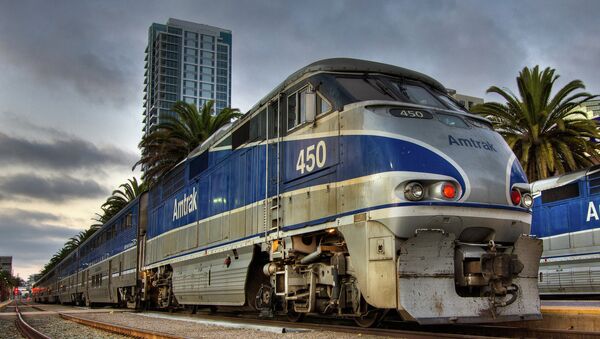In 2009, as the country was reeling from the economic crisis, President Barack Obama announced a new transportation initiative that would lay the groundwork for 13 high speed rail corridors running across the country. The project was designed both to improve transportation infrastructure and provide jobs for thousands of Americans who found themselves out of work in the first year of the Great Recession. 31 states and over 30 rail manufacturers were expected to participate in the venture. Six years later, with billions of dollars spent on implementing the project, President Obama’s vision for a nation interconnected by high-speed rail lines akin to those in Europe and Asia still remains a fantasy.
America’s first major attempt to develop such service came in the 1960s. The Lyndon Johnson administration, responding to the construction of the first high-speed rail network in Japan, worked to pass the High Speed Ground Transportation Act of 1965. In just a few years, the Metroliner, a train running at speeds nearing 125 miles per hour, was brought online in the Washington, D.C. – New York corridor. However, further progress on high-speed rail in the U.S. was slowed by influential opponents of national mass transit, economic difficulties and continued political upheaval in the 1970’s.
Opponents of passenger railroad development and mass transit in general use a number of arguments to derail transportation infrastructure projects. They range from economic claims, stating that rail transportation is inefficient and requires too much government spending, to politically charged pseudo-safety concerns, with some alleging that trains are more likely terrorist targets then cars. While these arguments frequently find their followers among right-wing Republican governors and ideologues, critics say the current administration is just as much to blame for the virtual collapse of its high-speed rail aspirations.
William Lind, a conservative columnist and head of the Center for Public Transportation argues that despite White House rhetoric, high-speed rail service “has always been a low priority for this administration”.
He told Sputnik that ineffective administrators were initially appointed to oversee the project, and warns that its evident failure could be used by opponents to hurt the chances of other mass transit projects being inaugurated in the future. He suggests that bipartisan efforts to repulse the “rail fail” platform of the libertarian streak of the Republican Party could be an effective way to implement national infrastructure projects that promote trade and the free flow of goods.
President Obama’s lame duck status, alongside the midterm elections that were disastrous for the Democrats, are bound to bury any chances for progress towards high-speed rail for the next two years. With the Republican party moving further into libertarian territory and mainstream Democrats “righting” themselves to the center, significant railroad infrastructure proposals seem unlikely to materialize, whoever ends up in the Oval Office next.
Contributed by Victor Olevich





